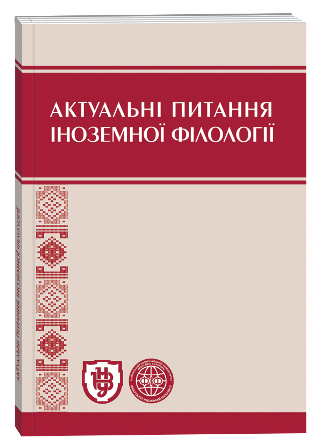CONCEPTOSPHERES OF THE UKRAINIAN AND AMERICAN YOUTH
DOI:
https://doi.org/10.32782/2410-0927-2020-13-5Keywords:
concept, conceptosphere, nucleus, near-nucleus zone, periphery, associative experimentAbstract
The article deals with the key concepts of cognitive linguistics («concept» and «conceptosphere») and the main methods of their study, in particular the procedure for conducting a free associative experiment. Associative experiments make it possible to obtain spontaneous and impartial reactions reflecting the way of respondents’ thinking and their perception of the surrounding reality. Such experiments help to single out concepts that form the conceptosphere of an individual, a certain group of people or nations. To describe the conceptospheres of the Ukrainian and American youth, a free associative experiment was conducted which involves 60 respondents (30 Ukrainians and 30 Americans) aged 18–25. The experiment was anonymous, so gender differences / similarities were not considered. As a result of the experiment, 591 associations were obtained (Ukrainian respondents gave 291 reactions, Americans – 300). Those reactions are verbalizers of concepts that are relevant to the Ukrainian and American youth. The most frequent concepts form the nucleus of the conceptospheres, the verbalizers of these concepts being reactions with a frequency of 6 and higher. The near-nuclear zone of the conceptospheres is formed by concepts, verbalized by reactions with a frequency of 5–2. Single reactions represent concepts that form the periphery of conceptospheres. The nucleus of the conceptosphere of the Ukrainian youth is formed by 10 concepts (СІМ’Я, КОХАННЯ, ЩАСТЯ, ДРУЗІ, ЗДОРОВ’Я, РОЗВИТОК, ДРУЖБА, ПОДОРОЖ, ДІТИ, УСПІХ), the nucleus of the conceptosphere of the American youth contains 12 concepts (LOVE, FAMILY, FREEDOM, FRIENDS, TRUST, HEALTH, LIFE, MONEY, HAPPINESS, FAITH, PEACE, LOYALTY). The experiment showed that the key concepts of the two conceptospheres are not unique, that is, they practically do not differ in the two parts of the experiment. However, we observe certain differences in the degree of importance of the concepts. Analysis of the near-nuclear zones and peripheries of the conceptospheres of the Ukrainian and American youth confirmed that the set of concepts that are relevant for the two linguocultures does not differ much. However, some of the concepts that form the nucleus of the Ukrainian youth’s conceptosphere appear on the periphery of the Americans’ conceptosphere, and vice versa: according to the experiments, concepts related to near-nuclear zone of the conceptosphere of the American youth form the periphery of the conceptosphere of the Ukrainians. Thus, despite the single, unique associations received from representatives of the two linguocultures, the experiment showed that the components of the conceptospheres of the Ukrainian and American youth are mainly concepts that have correspondences in both linguocultures.
References
Chernyshenko, Iryna. 2008. “Metody doslidzhennia kontseptiv u kohnitvnii linhvistytsi”. Naukovi zapysky. Seriia: Filolohichni nauky (movoznavstvo) 75 (4): 109–115.
Davydenko, Alla. 2018. “Fenomen kontseptu yak odniiei z osnovnykh skladovykh chastyn suchasnoi linhvistyky”. Naukovyi visnyk Mizhnarodnoho humanitarnoho universytetu 34 (1): 116–119.
Kubryakova, Elena and Valeriy Demiankov, Yuriy Pankrats and Luzina, Lada. 1996. Kratkiy slovar kognitivnykh terminov. Moscow: MGU.
Likhachev, Dmitriy. 1993. “Kontseptosfera russkogo yazyka”. Izvestiya RAN 52 (1): 3–9.
Stepanov, Yuriy. 1997. Konstanty: Slovar russkoy kultury. Moscow: Shkola “Yazyki russkoi kultury”.







